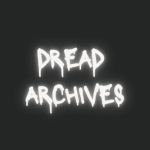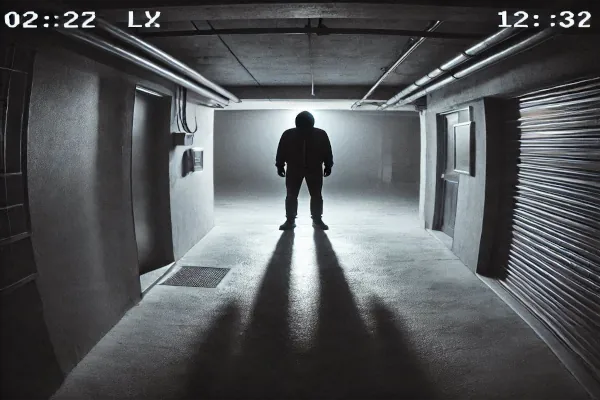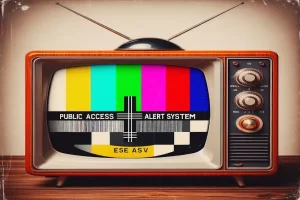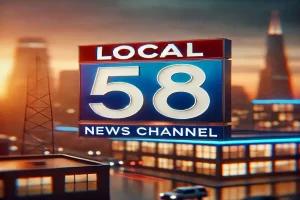Analogue horror has emerged as a chilling and captivating genre within the realm of psychological horror, relying on the eerie charm of outdated media to unsettle its audience. Unlike traditional jump scares or overt gore, analogue horror thrives on subtlety—distorted audio, glitching visuals, and the grainy imperfections of VHS tapes or retro broadcasts. These elements transport viewers back to an era when media felt raw and unpolished, creating a uniquely eerie atmosphere that lingers long after the screen goes dark.
The power of analogue horror lies in its ability to evoke fear through what feels familiar yet strangely wrong. Distorted voices crackling through static-filled audio, unsettling messages hidden in broken video signals, or the ominous hum of an old television—all these details create a sense of unease that resonates deeply with the human psyche. By playing with distortion and ambiguity, the genre taps into our primal fear of the unknown, leaving us questioning what we’ve seen and heard.
In this exploration, we’ll uncover how these audio-visual distortions form the backbone of analogue horror, heightening tension and amplifying dread. From haunting VHS tapes to glitchy transmissions, we’ll examine how distorted media becomes a powerful tool for storytelling, pulling viewers into a surreal and terrifying experience unlike any other.
Understanding Analogue Horror
Defining Analogue Horror
Analogue horror is a subgenre of psychological horror that draws its unsettling power from the aesthetic of retro media like VHS tapes, cassette recordings, and vintage broadcasts. Unlike traditional horror, which often relies on visceral imagery or overt supernatural elements, analogue horror creates tension through subtle distortions and a creeping sense of unease. Grainy video quality, static-filled audio, and cryptic messages hidden within mundane recordings give the genre its distinct identity.
The foundation of analogue horror lies in its ability to blur the line between fiction and reality. By mimicking the imperfections of outdated technology, it taps into nostalgia while simultaneously corrupting it, making the familiar feel disturbingly alien. This realism is key to the genre’s appeal, immersing audiences in a world that feels eerily plausible. Whether it’s a strange broadcast interruption or a cursed home video, analogue horror thrives on making viewers question what’s real and what’s fabricated.
The Evolution of Analogue Horror
Though analogue horror has its aesthetic roots in retro media, its resurgence is tied closely to the internet’s rise as a platform for experimental storytelling. Early examples like Marble Hornets (2009), inspired by the Slenderman mythos, paved the way for the genre’s growth online. Later projects, such as Local 58, The Mandela Catalogue, and Gemini Home Entertainment, established analogue horror as a modern phenomenon, with each series using distorted visuals and cryptic storytelling to unsettle viewers.
These works have not only shaped the genre but also influenced broader internet horror culture. They leverage tools like YouTube’s video format to emulate “found footage,” giving the impression that the audience has stumbled upon something they shouldn’t have. Through clever use of glitches, corrupted visuals, and haunting sound design, analogue horror series amplify dread while building intricate, layered narratives. This evolution highlights the genre’s adaptability, transforming vintage media into a vessel for modern fears and anxieties.
The Psychological Impact of Distortion
The Fear of the Unknown
At the heart of analogue horror lies a primal fear: the fear of the unknown. Distorted audio and video recordings tap into this unease by presenting something that feels both familiar and unsettlingly alien. When static crackles over a voice or a video frame skips at the exact wrong moment, viewers are left with an incomplete picture, forcing their imagination to fill in the gaps. This ambiguity is what makes analogue horror so effective—it invites viewers to interpret fragmented clues, heightening their anxiety as they try to make sense of the distorted media.
This sense of “not fully understanding” creates a psychological tension, as the brain struggles to process what it’s seeing and hearing. Humans are naturally wired to seek patterns and meaning, but analogue horror purposely denies this closure. A warped voice delivering a cryptic message, a shadow that lingers a second too long, or a video frame corrupted by glitches—all these elements make viewers feel like they are witnessing something they were never meant to see, evoking dread through suggestion rather than explicit scares.
Breaking Perception and Reality
Distorted media also plays with the boundaries between reality and fiction, making it difficult for viewers to trust their own perceptions. The imperfections of analogue technology, like static lines and audio warping, feel authentic because they mimic the flaws of real-world recordings. When horror elements are layered onto these distortions, they blur the line between what’s real and what’s fabricated. This subtle manipulation of perception disorients viewers, leaving them unsure of whether the strange occurrences are intentional or accidental.
This deliberate ambiguity feeds into a deep-seated discomfort. The juxtaposition of ordinary visuals—such as a nightly news broadcast or a home video—with unnatural glitches or eerie interruptions makes viewers question the reliability of what they’re consuming. It’s the very uncertainty of analogue horror that keeps audiences on edge, forcing them to question every static-filled second and every corrupted frame, all while their sense of reality begins to unravel.
Distorted Video: Glitches, VHS Tapes, and Static
Glitches and Corruptions as Narrative Devices
In analogue horror, glitches and corrupted video files are more than just stylistic choices—they serve as powerful narrative tools. A sudden static-filled interruption or a distorted image creates a sense of chaos, giving the impression that the media itself is breaking down under the weight of something sinister. These visual disruptions evoke feelings of unease, as they seem to hint at a deeper, malevolent force lurking just beyond the screen.
Glitches often mirror the unraveling of reality within the story. For example, a video might begin normally before devolving into incomprehensible fragments, symbolizing the protagonist’s descent into madness or the invasion of an unnatural force. This disjointed presentation keeps viewers on edge, forcing them to question the stability of the narrative. The unpredictability of glitches adds another layer of tension, as viewers never know when or how the next distortion will strike, making every moment fraught with anticipation.
The Use of VHS and Low-Resolution Visuals
The grainy, imperfect aesthetic of VHS tapes has become a hallmark of analogue horror, leveraging nostalgia as a double-edged sword. On one hand, these visuals evoke a sense of familiarity and a connection to the past. On the other, their low resolution and degraded quality create an uncanny atmosphere, where the comforting becomes unsettling. The blurred lines and muted colors of VHS footage give the impression that something is hidden within the static, just out of reach.
This distortion also plays into the horror by undermining the trust viewers place in the medium. In a high-resolution video, every detail is clear and understandable. But with VHS-style visuals, imperfections obscure critical elements, leaving the audience to imagine what might be lurking in the shadows or hidden by static. This lack of clarity mirrors the breakdown of a “safe” environment, transforming the nostalgic into the nightmarish. By combining low-resolution visuals with glitches and static, analogue horror crafts a uniquely disorienting experience that grips viewers with its eerie authenticity.
The Uncanny Valley Effect: What Distorted Audio and Video Tap Into
Uncanny Sound and Image
Distorted audio and video are a cornerstone of analogue horror because they exploit the uncanny valley effect, where something familiar becomes deeply unsettling when altered in subtle ways. A human face that glitches unnaturally, or a voice that sounds almost normal but has a faint, distorted quality, can evoke an instinctive sense of discomfort. These imperfections, while small, leave the viewer questioning the authenticity of what they’re seeing or hearing, creating a powerful sense of unease.
This effect works so well in analogue horror because it mimics real-world glitches that feel inherently “wrong.” A warped smile frozen in time, a voice that stretches into an eerie, drawn-out echo, or a brief moment where static overtakes the screen—all of these elements keep viewers in a heightened state of tension. The mind tries to reconcile the familiar with the flawed, but the inability to fully interpret these distortions leaves the viewer stuck in a psychological limbo, amplifying the horror experience.
The Disruption of Comforting Media
One of the most unsettling aspects of analogue horror is its distortion of media we traditionally associate with comfort, such as old family VHS tapes, educational broadcasts, or public service announcements. These formats are often tied to feelings of nostalgia and safety, but when they are warped and manipulated, they become deeply unnerving. For instance, a children’s cartoon with a flickering image or an old instructional video interrupted by cryptic static transforms the familiar into a source of dread.
This subversion of comforting media works because it plays on the viewer’s expectations. The aesthetic might initially feel safe and benign, but subtle disruptions—a distorted laugh track, a character’s eyes glitching unnaturally—fracture that sense of security. The result is a jarring emotional shift, where what should feel harmless now feels threatening. By turning the ordinary into the ominous, analogue horror taps into our most primal fears: the loss of safety and the realization that even the familiar can become terrifyingly unfamiliar.
The Role of Technology and Nostalgia in Distorted Horror
The Influence of Old Technology on Fear
Analogue horror owes much of its unsettling power to the eerie aura of old technology. Devices like VHS tapes, CRT televisions, and static-filled radios carry an inherent sense of nostalgia, but when they malfunction or distort, they become deeply unnerving. The grainy, imperfect quality of these mediums contrasts sharply with modern, high-definition visuals, making their glitches feel raw and unpredictable. The flickering of a CRT screen or the sudden cut of a VHS tape into static creates an atmosphere of chaos and unease, tapping into a fear of the unknown.
These technological imperfections connect to primal fears of losing control or encountering the incomprehensible. A VHS tape rewinding on its own or a voice warped by static feels almost alive, as though the technology itself has taken on a sinister agency. By presenting familiar devices in ways that defy our expectations, analogue horror transforms tools of communication and entertainment into vessels of dread.
Nostalgia for a Time We Can’t Fully Recall
The power of nostalgia plays a key role in analogue horror, drawing viewers into a past that feels both comforting and unsettling. This psychological effect stems from our tendency to romanticize the past, even if our memories of it are incomplete or idealized. Analogue horror capitalizes on this by presenting distorted imagery and sound that resemble childhood memories or cultural relics from decades ago—things that feel familiar but just out of reach.
When these nostalgic elements are corrupted—like a cheerful instructional video interrupted by ominous static or a home movie overlaid with eerie whispers—it creates a powerful emotional dissonance. The familiar becomes twisted, a reminder that even our fondest memories can hide something sinister. This corruption taps into a deep-seated fear of the past being distorted or forgotten, forcing us to confront the idea that nostalgia isn’t always comforting—it can also be haunting.
By blending the warm familiarity of old technology with unsettling distortions, analogue horror blurs the line between memory and nightmare, creating an experience that is as psychologically profound as it is terrifying.
Conclusion
Distorted audio and video stand at the heart of analogue horror, transforming simple glitches and imperfections into powerful tools for fear. By playing on the psychological unease of the unknown, disrupting the familiar, and tapping into the uncanny, these elements enhance the genre’s immersive and terrifying experience. Whether it’s the static-filled pause of a VHS tape, the eerie warping of a voice, or a corrupted image that seems to defy explanation, distortion leaves a lingering sense of dread that stays with audiences long after the screen fades to black.
These techniques continue to resonate deeply with viewers because they exploit universal fears—losing control, facing the inexplicable, and finding horror in things we once considered safe or nostalgic. The ability of analogue horror to build suspense and amplify fear through distorted media proves that sometimes, what we can’t fully see or hear is the most terrifying of all.
If you’re intrigued by how distortion shapes the analogue horror experience, why not dive into the genre yourself? Explore chilling series and films like The Mandela Catalogue, Local58, or Marble Hornets to see these techniques in action. Prepare to unravel their unsettling narratives and experience firsthand how the smallest imperfections can create the most spine-chilling tales.




